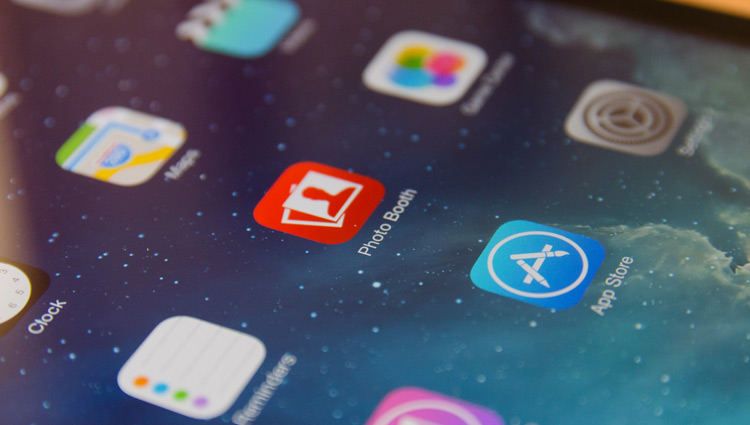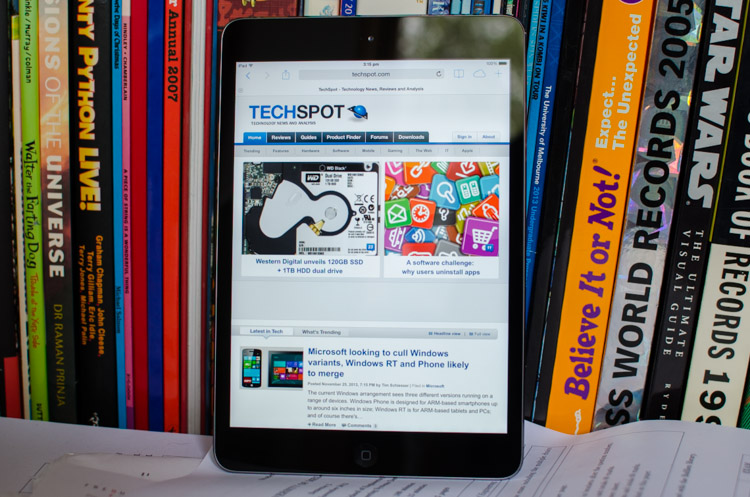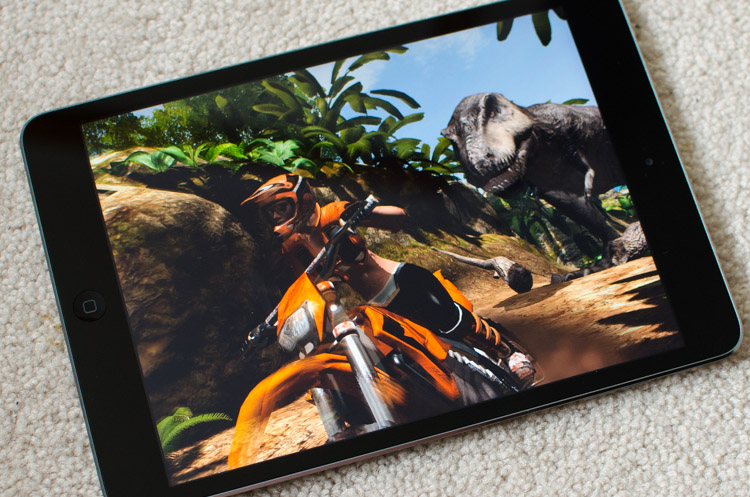Performance: A7 For Everyone
If you've read our reviews of the iPhone 5s and iPad Air, this section will feel a little familiar, as the second-generation iPad mini contains very similar internals. In fact, the hardware in the iPad mini is identical to that of the iPhone 5s: an Apple A7 SoC including a 1.3 GHz dual-core 'Cyclone' CPU (ARMv8 with 64-bit addressing) and a ~450 MHz PowerVR G6430 GPU, 1 GB of LPDDR3 RAM and an Apple M7 motion coprocessor. The iPad Air features a 1.4 GHz CPU, which is clocked 7.7% faster, but other areas remain the same.
Like previous iPads, the iPad mini with Retina display comes in two different versions. The one I have on-hand for this review is the Wi-Fi model, packing 2.4 GHz and 5 GHz Wi-Fi 802.11a/b/g/n, and Bluetooth 4.0; there's also the cellular model that includes LTE, HSPA+ and CDMA radios, and A-GPS. There's no expandable storage in the iPad mini, but there are four different storage options (16, 32, 64 and 128 GB) available.
The iPad mini feels extremely snappy in all situations, whether you're loading applications, browsing the web or playing games. If you reduce motion in the iPad mini's settings (which I highly recommend you do), everything appears to happen instantly without exaggerated animations, regardless of whether you've opened the application before or not. Multitasking also feels smooth, in spite of only carrying 1 GB of RAM.
Apple has gone to considerable lengths to optimize the software to work in tandem with their custom-made hardware, and it really pays off. I still find the performance of iPads to be very interesting considering it packs just a 1.3 GHz dual-core CPU, compared to quad-core CPUs from Qualcomm and Nvidia in Android slates. Even web-browsing with multiple tabs, which uses most of the CPU power on an Android tablet, is as smooth as ever on the iPad mini.
I tried a number of the latest games on the iPad mini, including new flagship title Infinity Blade III and a personal favorite of mine, Real Racing 3. There is no shortage of graphics power in this device, as all titles I played ran smoothly with fantastic graphics at 2048 x 1536. I expect there's a bit of graphics headroom in this device as well, so in the future we might see even more visually impressive games running on the G6430 graphics core.
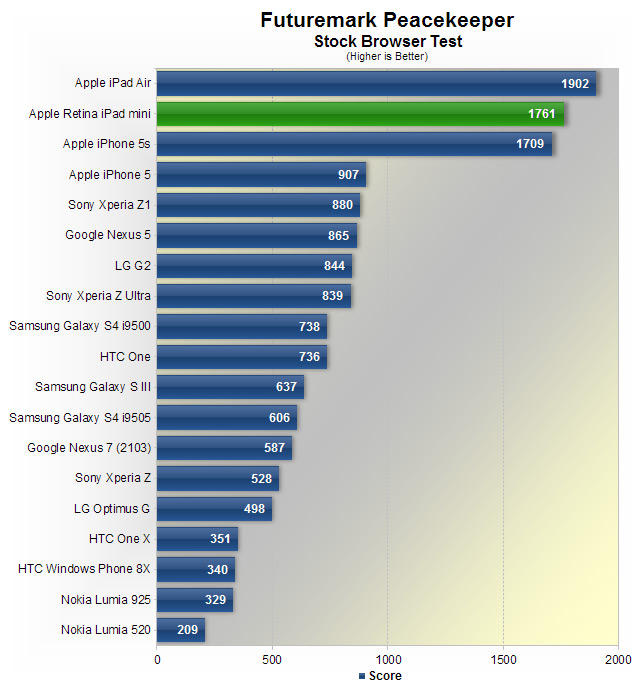
In Futuremark's in-browser benchmark, Peacekeeper, the iPad mini with Retina display performs similarly to the iPhone 5s, while the iPad Air is 8% faster, in line with the respective clock speed increase we had mentioned above. The tablet is 94% faster than the iPhone 5 and nearly three times faster than the Nexus 7, mostly due to browser optimizations.
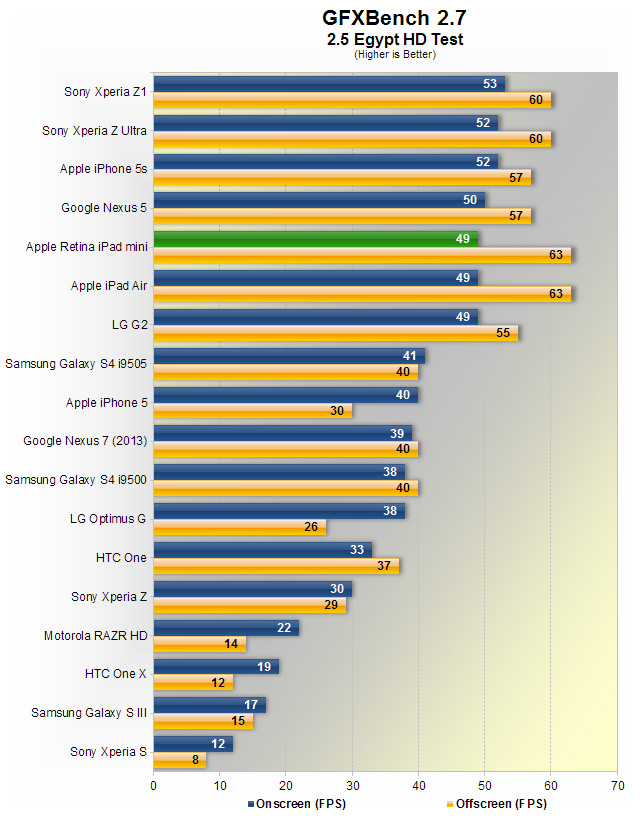
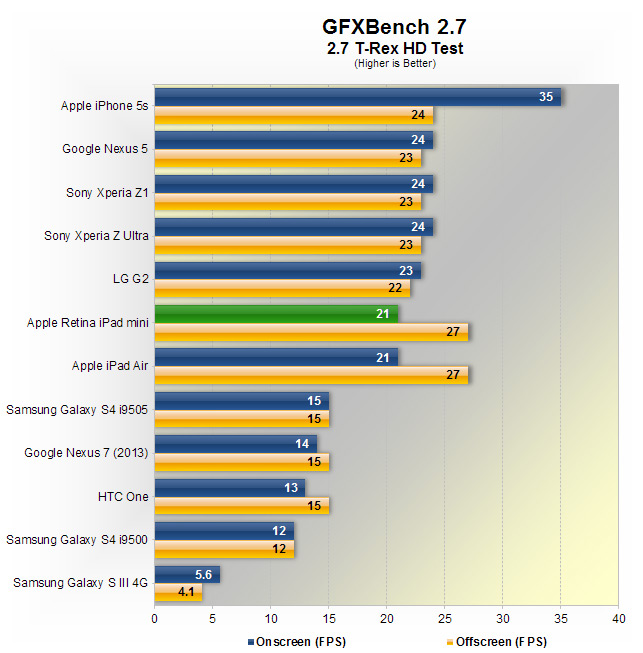
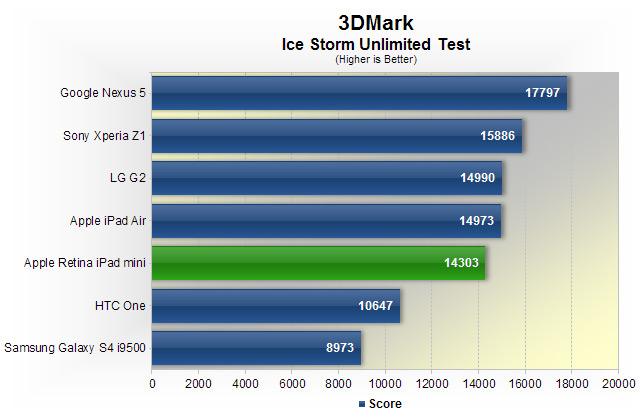
In GFXBench and 3DMark, the iPad mini performs nearly identically to the iPad Air, which indicates the two tablets have GPUs running at the same clock speeds (likely 450 MHz). The PowerVR G6430 graphics core is faster in some situations than competing Android devices, however the higher resolution (1.5x greater than 1080p) means it falls on-par in onscreen GPU tests.
The iPad mini Retina doesn't have the latest Wi-Fi technology (802.11ac), but it does have radios for both 2.4 GHz and 5 GHz Wi-Fi n, which is perfect for those in crowded wireless areas. I had no trouble streaming compressed 1080p media from a home sever on 5 GHz 802.11n, or attaching peripherals like a keyboard via Bluetooth, so I was perfectly pleased with the wireless aspects of this device.
As with the iPad Air, the second-generation iPad mini delivers fantastic performance both in applications and in games. It's especially wonderful to see Apple give the mini the same internals as the Air and iPhone 5s, unlike the previous generation where the iPad 4 was considerably more powerful than the original mini.
